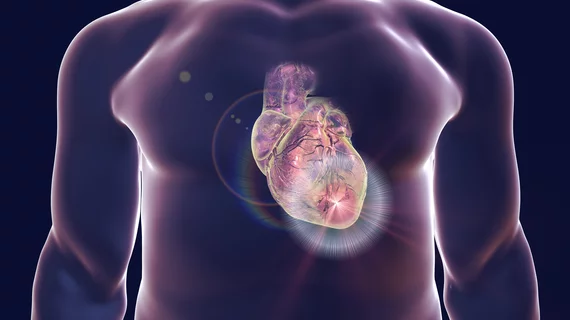MRI with lower magnetic field enhances lung, heart imaging
A new high-performance, low magnetic-field MRI system developed, in part, by researchers at the National Institutes of Health (NIH) can produce higher-quality images of the lungs and heart and may be safer for patients with implantable devices.
The system, described in a study published online Oct. 1 in Radiology, is also more compatible with interventional devices such as catheters and guidewires, which may make imaging more affordable and accessible for patients.
“We continue to explore how MRI can be optimized for diagnostic and therapeutic applications,” Robert Balaban, PhD, chief of the Laboratory of Cardiac Energetics at the National Heart, Lung, and Blood Institute (NHLBI), said in a statement. “The system reduces the risk of heating — a major barrier to the use of MRI-guided therapeutic approaches that have hampered the imaging field for decades.”
Most MRI research has focused on increasing magnetic field strength in an effort to produce clearer images, but Balaban and colleagues wanted to test if those same systems—used at a modified strength— could yield high quality scans of the heart and lung.
The researchers altered a commercial Siemens Healthcare MAGNETOM Aera MRI system with a magnetic field strength of 1.5T to function at 0.55T, but kept all the hardware and software required for high-quality imaging. First the team tested the low-field procedure on a replica of human tissue, then did the same in 68 healthy participants and 15 with disease.
Balaban et al. found lung imaging improved overall. Oxygen, they noted, could be better seen in the tissue and blood during lower magnetic fields than higher ones, offering a view of the distribution of molecules in the body. The low-field system also improved the visualization of lung cysts and surrounding tissue in participants with lymphangioleiomyomatosis.
“MRI of the lung is notoriously difficult and has been off-limits for years because air causes distortion in MRI images,” Adrienne Campbell-Washburn, PhD, a staff scientist in the Cardiovascular Branch at NHLBI, said in the statement. “A low-field MRI system equipped with contemporary imaging technology allows us to see the lungs very clearly. Plus, we can use inhaled oxygen as a contrast agent. This lets us study the structure and the function of the lungs much better.”

